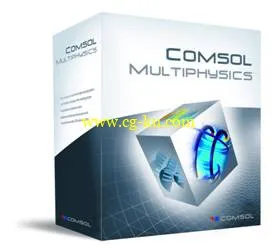
COMSOL
公司于2013年正式公布v4.3b版COMSOL
Multiphysics
,新的特点能为整个建模与模拟过程带来更大效率的科学性数值模拟套件。
COMSOL
Multiphysics 是全球领先的对多物理场耦合问题进行建模和仿真计算分析的专业软件。它最突出的特点是同时处理相互影响、相互耦合的多物理场问题。目前,其专业领域的应用模块有: 结构模块、化工模块、地球物理模块、电磁模块、热传模块以及微机电模块。另一个产品COMSOL Script是互动编译语言,可做通用的科学计算工具及支持COMSOL Multiphysics 自动批次作业,
COMSOL
Script的最大特色是使用命令行建模。人机互动式的可视化界面接口支持工程单元系统,移动式网格功能。多物理场耦合分析最大的特点在于,可以多物理场分析一次完成,不用多套软件的重复使用。
COMSOL
Multiphysics的主要特征是容易建立模型且可客户化,能执行1D、2D或是3D模型。1999年发布的FEMLAB1.0是一个标志性的新开端,对于所有科学和工程领域内物理过程的建模和仿真提供了一个崭新的工具。而2009年发展到COMSOL Multiphysics v4.3,则是功能日益强劲,软件也日益成熟的一款产品。
COMSOL Multiphysics v4.3b ISO-TBE | 3.4GB
The COMSOL Multiphysics simulation environment facilitates all the steps in the modeling process – defining your geometry, meshing, specifying your physics, solving, and then visualizing your results. It also serves as a platform for the application specific modules.
Model set-up is quick, thanks to a number of predefined physics interfaces for applications ranging from fluid flow and heat transfer to structural mechanics and electrostatics. Material properties, source terms, and boundary conditions can all be spatially varying, time-dependent, or functions of the dependent variables. You can freely mix physics interfaces into new multiphysics combinations as well as couple with any application specific module.
As an alternative to writing your own simulation code, the COMSOL Multiphysics user interface gives you the option to specify your own partial or ordinary differential equations (PDEs or ODEs) and link them with other physics interfaces. When combined with the CAD Import Module or one of the LiveLink products, this enables you to run custom simulations on CAD models from industry-standard formats.
New Application-Specific Modules
With the introduction of the five new modules, users in key application areas from major industries now have access to the new modeling and simulation tools offered by COMSOL.
- Multibody Dynamics Module – Provides users with the ability to analyze the assembly of rigid and flexible bodies. Transitional and rotational displacements, as well as locking, can be simulated for a variety of joint types, including prismatic, hinge, cylindrical, screw, planar, ball, slot, and reduced slot joints.
- Wave Optics Module – Allows users to analyze electromagnetic wave propagation in optically large structures, such as optical fibers and sensors, bidirectional couplers, plasmonic devices, metamaterials, laser beam propagation, and non-linear optical components.
- Molecular Flow Module – Offers the capability to simulate rarefied gas flow in complex CAD geometries of vacuum systems. This includes such applications as mass spectrometers, semiconductor processing, satellite technology, particle accelerators, shale gas exploration, and flow in nanoporous materials.
- Semiconductor Module – Enables the detailed analysis of semiconductor device operations at the fundamental physics level allowing for the modeling of PN junctions, bipolar transistors, MOSFETs, MESFETs, thyristors, and Schottky diodes.
- Electrochemistry Module – Tailored user interfaces are now available for electroanalysis, electrolysis, and electrodialysis. Typical applications include: glucose sensors, gas sensors, chlor-alkali electrolysis, desalination of seawater, waste water treatment, and control of electrochemical reactions in biomedical implants.
New COMSOL Multiphysics Capabilities
The new features delivered with the COMSOL product suite include enhancements to CAD importing and geometry handling, meshing, physics, solvers, results, and productivity tools that offer increased usability and performance throughout the product development process. COMSOL Multiphysics 4.3b brings tremendous enhancements to features in existing modules, thus augmenting simulation speed and the capabilities of the entire product suite.
- Geometry and Mesh – A new feature allows users to make quick what-if studies by taking a 2D geometry from the cross-section of a 3D geometry. A new curvilinear coordinate system tool makes it easier to define anisotropic materials in curved geometric shapes. Additionally, increased automated swept meshing capabilities allow for faster modeling.
- Interfacing and Productivity – The new One Window Interface with LiveLink for Inventor® allows users to work with COMSOL Multiphysics from within the Inventor environment. New updates in LiveLink for Excel allow the import of multiple models and export of material data from Excel to COMSOL.
- Electrical – A new magnetics solver facilitates faster stationary and time-dependent magnetics simulations. A new electrical contact feature is added to the AC/DC Module; the electric current flowing between two surfaces now varies according to surface properties and contact pressure. The periodic structures for electromagnetic waves feature is now available in the RF Module.
- Mechanical – Bolt pre-tension and beam cross-section analysis can now be simulated in the Structural Mechanics Module. Cumulative damage for fatigue analysis with random amplitude loads is now available in the Fatigue Module. The Heat Transfer Module has been enhanced with multi-wavelength surface-to-surface heat radiation, heat transfer with phase change, and thermal contact features.
- Fluid – The new frozen rotor feature in the CFD Module efficiently solves for the pseudo-steady flow field in rotating machinery for laminar and turbulent flow. A new thin screen feature for thin permeable barriers allows the simulation of wire gauzes, grills, and perforated plates. Additionally, the SST turbulence model and a new CFD solver are now available.
- Chemical – The new thin impermeable barrier for mass transport feature allows users to represent thin walls as interior boundaries with a no-mass-flux condition on both sides.
Download 百度云
你是
VIP 1个月(1 month)
赞助会员,可以看到以下内容
隐藏
密码:a4w8
发布日期: 2013-05-28